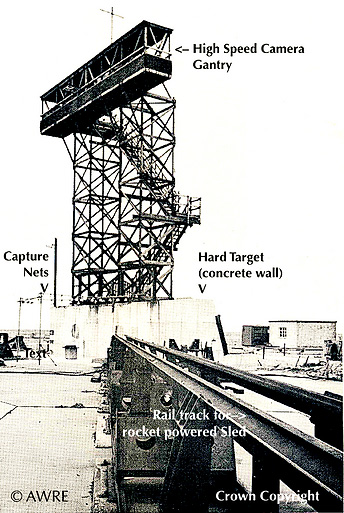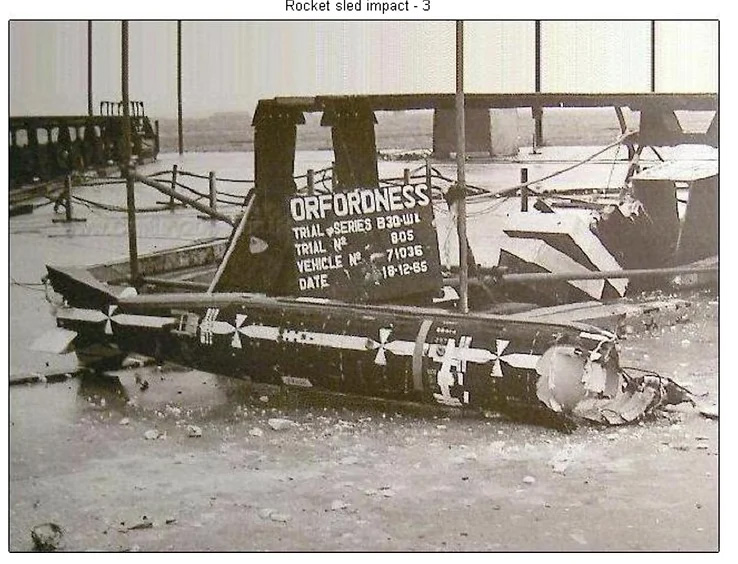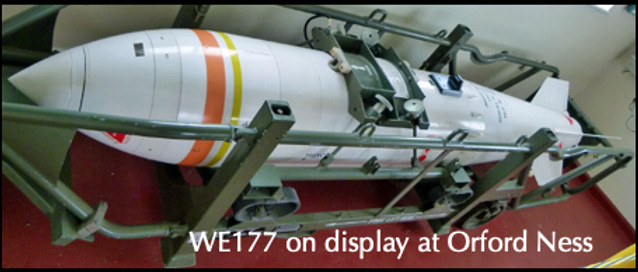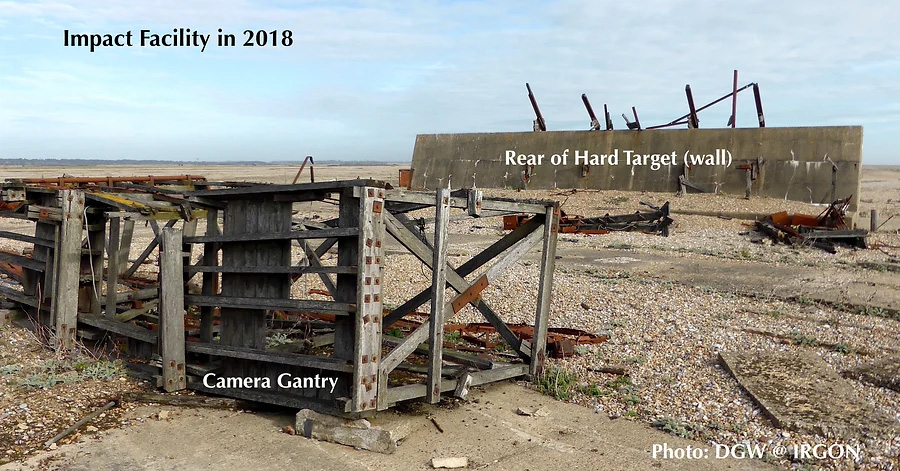
The impact facility and WE. 177 weapon
The Impact Facility was a structure built by AWRE Aldermaston on Orford Ness to test the ability of the WE.177 series of low-level, free-fall, nuclear weapons to correctly detonate after experiencing any mechanical shocks incurred during a ‘laydown’ landing.
The UK’s early atomic bombs, Blue Danube (24ft long/weighing 10,000lb), and Red Beard (12ft long/2,000lb), were large and cumbersome, required delivery by strategic bombers, and had operational shortcomings. With increased nuclear yields it became possible to produce smaller weapons that could be delivered from low-flying ‘tactical’ aircraft.
For the protection of the pilot and aircraft, it became necessary to develop strategies to create a distance between the pilot and the location and timing of the detonation. This strategy was achieved in several ways including ‘laydown’ bombing which was essentially a free fall, but parachute-retarded, landing – followed by a defined time-delayed ground detonation.
The Impact Facility (or Hard Target)
The Impact Facility on Orford Ness was built in 1963, operated until 1968, and consisted of three structures. These were (a) the ’Hard Target’ (a massive concrete wall and associated concrete apron and supported rail tracks), (b) a wooden Camera Gantry and (c) a shared Control Room.

To simulate the impact forces that a WE.177 might experience during a ‘laydown’ delivery – when the weapon would strike the target with a low angle of attack – the weapon was fired into the concrete wall (hard target). This was done to assess the adequacy of the structural strength and the ability of its inbuilt timers (fuses) to reliably detonate with a pre-determined delay after a landing impact. Its fissile component was not present, but often its high-explosive components were.
A WE.177 was mounted on a rocket-propelled wooden sled that travelled along a rail track to impact the wall at 150mph. Impact data, transferred via an umbilical cord from sensors within the weapon, was recorded externally. The impact was also recorded on Vinten high speed film cameras mounted on a wooden gantry some 50ft above the impact point.

© Crown Copyright / AWE 2021 Contains public sector information licensed under the Open Government Licence v3.0
The WE.177 series
The WE.177 was Britain’s last free-fall nuclear weapon and was in use between 1966 and 1998. It was produced with three different variants for different targets and had a wide range of selectable nuclear yields. Versions A and B were both high-yield ‘strategic’ weapons, but C was a low-yield ‘tactical’ weapon. A and B were in service with the RAF from 1966 and C, used as a ‘depth bomb’ by the Royal Navy, from 1971. Weapon delivery could be from a wide variety of aircraft including Britain’s V-bombers (Valiant, Victor and Vulcan), tactical aircraft (such as the Canberra and Buccaneer) and helicopters (such as the Wessex and Lynx).

Impact Facility – 2018 Photograph
This shows the condition of the Impact Facility some 50 years after its closure. This is typical of the current condition of most of the other Cold War structures on Orford Ness.

Click below for the full impact facility report
